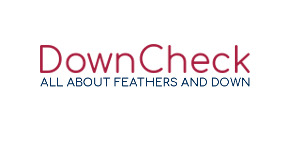What are the indications reported on the label according to the new standard?
If a manufacturer labels his products according to the European standard – what he usually does - the consumer will find the following information on the label.
- Is the filling labelled as new? This means that the filling does not contain any reprocessed material. Also the labelling component “class I” signifies that the filling consists of new material. Usually, the consumer is not aware of the meaning of the single classes. Therefore, the term “new” is usually stated on the label as well.
For example:
white Hungarian new goose down and feathers, class I, 90 % down, 10 % feathers
- Which fowl species provide the down/feathers? (By the way, instead of goose and / or duck the term waterfowl might be labelled at this point.) )
In our example:
white Hungarian new goose down and ‑feathers, class I, 90 % down, 10 % feathers
- Then the class is indicated to which the filling has been assigned. It is a novelty that fillings consisting of down and feathers are assigned to classes.
There are seven classes ranging from I to VII. The first three classes (I to III) refer to down and feathers deriving from waterfowl, i. e. goose and duck. Fillings containing blends of landfowl and / or waterfowl are assigned to classes IV to VII.
- Finally, the composition of the down and feather filling is labelled. It is indicated in weight percentage, namely in groups rounded to the nearest 10% stated in decreasing order – so the highest percentage is stated first.
An exception from the rule which is mentioned above is fillings consisting of 85 % feathers and 15 % down, i. e. the former denomination “half down”.
Further information at .
- What is the new standard EN 12934?
- What are the regulations specified in the new standard EN 12934?
- Half down, three-quarters down, feathery down, original ... how are the former terms defined in accordance with EN 12934?









